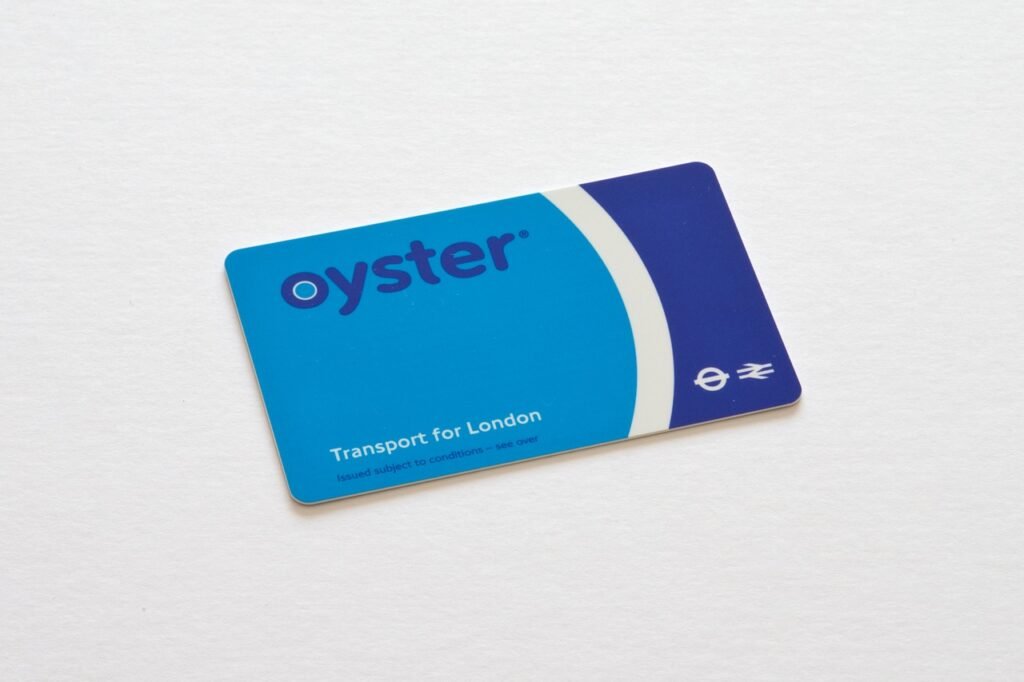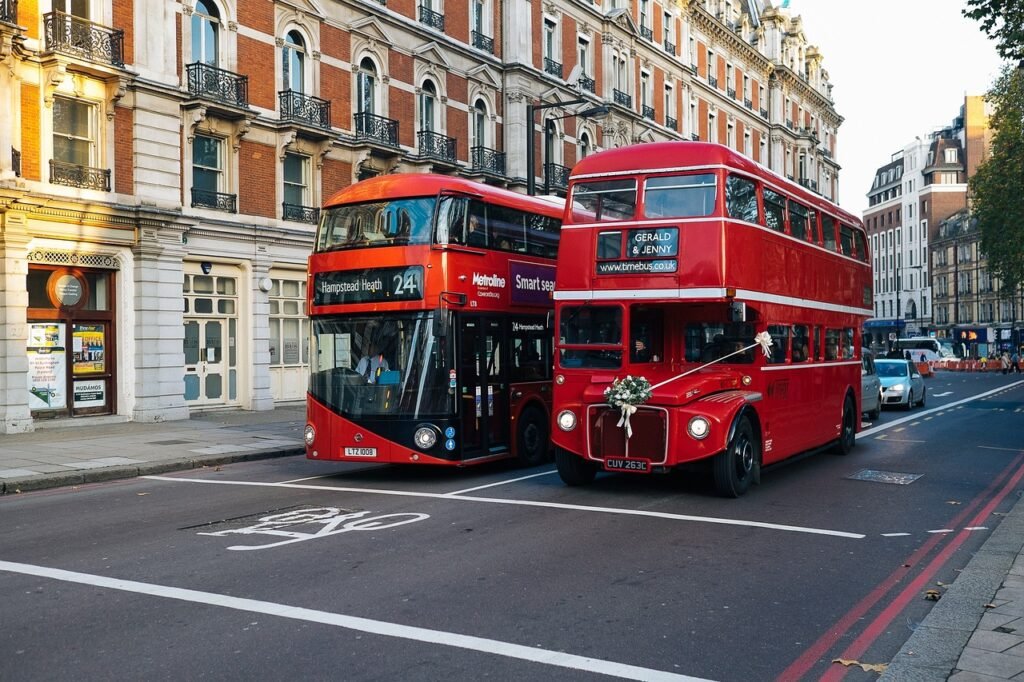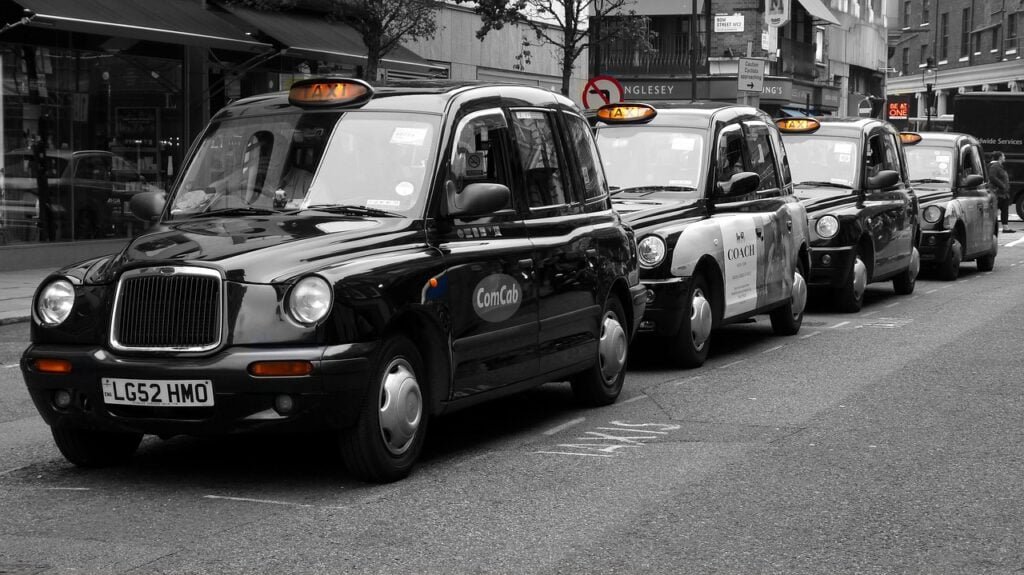Getting Around in London Introduction
London, the bustling capital of the United Kingdom, is a city that never fails to captivate visitors with its rich history, diverse culture, and iconic landmarks. However, navigating this sprawling metropolis can be daunting for newcomers. Fear not! This comprehensive guide will equip you with all the knowledge you need to traverse London like a seasoned local.
- Getting Around in London Introduction
- Understanding London’s Layout
- The Oyster Card and Contactless Payments
- The London Underground (The Tube)
- Buses
- Cycling in London
- Walking
- Taxis and Ride-Hailing Services
- River Bus Services
- Docklands Light Railway (DLR)
- London Overground
- National Rail Services
- Planning Your Journey
- Tips for Efficient Travel
- Accessibility
- Sustainable Travel
- Conclusion
- Getting Around in London – FAQs
Understanding London’s Layout
Before diving into the various transportation options, it’s crucial to understand London’s basic layout. The city is divided into several zones, with Zone 1 being the central area where many of the famous attractions are located. The zones extend outward, with Zone 9 being the furthest from the centre. This zonal system is essential for determining fares on public transport.
The River Thames serves as a natural divider, separating North London from South London. Many Londoners use this as a reference point, often describing locations as being “north of the river” or “south of the river.”

The Oyster Card and Contactless Payments
One of the first things you should do upon arriving in London is to obtain an Oyster card. This reloadable smart card is your key to seamless travel across London’s public transport network. It can be used on buses, the London Underground (commonly known as the Tube), trams, Docklands Light Railway (DLR), London Overground, and most National Rail services within London.
You can purchase an Oyster card at any Tube station, many shops, and visitor centres. There’s a small refundable deposit, and you can top it up with credit as needed. The Oyster card offers significant savings compared to buying individual tickets for each journey.
Alternatively, if you have a contactless debit or credit card, you can use this directly on the card readers at stations and on buses. This works in the same way as an Oyster card and charges the same fares. Many visitors find this convenient as it eliminates the need to purchase a separate card.

The London Underground (The Tube)
The London Underground, affectionately known as “The Tube,” is the oldest underground railway network in the world and remains the backbone of London’s public transport system. With 11 lines covering 402 km (250 miles) and serving 272 stations, it’s often the fastest way to get around the city.
Here are some key things to know about the Tube:
Standing on the Right: On escalators, stand on the right and walk on the left. This unwritten rule is taken very seriously by Londoners!
Hours of Operation: Most lines run from around 5:00 AM to midnight Monday to Saturday, with reduced hours on Sunday. The Night Tube offers 24-hour service on weekends for certain lines.
Mind the Gap: You’ll hear this famous phrase announced at stations. It’s a reminder to be careful of the space between the train and the platform.
Rush Hour: Avoid travelling during peak times (roughly 7:30-9:30 AM and 4:30-6:30 PM on weekdays) if possible, as trains can get extremely crowded.
Tube Map: Familiarize yourself with the iconic Tube map. While not geographically accurate, it’s an excellent tool for planning your journey.

Buses
London’s iconic red double-decker buses are not just a symbol of the city but also an efficient way to get around. Here’s what you need to know:
- Extensive Network: Buses cover a vast network, reaching areas not served by the Tube.
- Cashless System: You can’t pay with cash on buses. Use your Oyster card, contactless payment card, or a bus pass.
- Hop On, Hop Off: Unlike some cities, you only tap your card once when entering the bus, regardless of the length of your journey.
- Night Buses: Many routes operate 24/7, making them a great option for late-night travel.
- Top Deck Views: Sitting on the top deck of a bus can offer great views of the city, especially on routes passing famous landmarks.

Cycling in London
In recent years, London has made significant strides in becoming more cycle-friendly. The city’s bike-sharing scheme, Santander Cycles (colloquially known as “Boris Bikes” after former mayor Boris Johnson), offers a convenient way to explore the city on two wheels.
Here’s how it works:
- Find a docking station (there are over 750 across the city).
- Use the terminal to get a ride code or use the Santander Cycles app.
- Choose a bike, enter the code to unlock it, and you’re ready to go.
- When you’re done, return the bike to any docking station.
For longer-term stays, consider renting a bike from one of the many cycle shops in the city. Always remember to follow traffic rules and be aware of your surroundings, especially if you’re not used to cycling in busy urban environments.
Walking
Don’t underestimate the power of your own two feet! Many of London’s attractions are within walking distance of each other, especially in the central areas. Walking allows you to discover hidden gems, charming side streets, and local neighbourhoods that you might miss when using other forms of transport.
Some tips for walking in London:
- City Mapper App: This app is excellent for planning walking routes and estimating times.
- Look Both Ways: Traffic comes from the left in the UK, which can be confusing for visitors from right-hand drive countries.
- Thames Path: This walking and cycling route along the River Thames offers beautiful views and passes many landmarks.

Taxis and Ride-Hailing Services
London’s black cabs are as iconic as the red buses. These spacious taxis can be hailed on the street when the yellow “TAXI” sign is illuminated. Black cab drivers must pass a rigorous test called “The Knowledge,” ensuring they know every street in central London.
Ride-hailing services like Uber also operate in London, often providing a cheaper alternative to black cabs. However, they may not always be able to use bus lanes like black cabs can, which can make a difference in travel time during busy periods.

River Bus Services
For a unique perspective of the city, consider using the River Bus services operated by Thames Clippers. These boats serve piers along the Thames from Putney in the west to Woolwich in the east. It’s a scenic way to travel and can be faster than other modes of transport for certain routes. Oyster cards are accepted on these services.
Docklands Light Railway (DLR)
The DLR is an automated light metro system serving the redeveloped Docklands area in East London. It’s fully integrated with the rest of London’s public transport network and can be accessed using an Oyster card. The DLR is entirely above ground, offering good views of the Docklands area and Canary Wharf.
London Overground
The London Overground is a suburban rail network that forms part of the National Rail network. It serves a large part of Greater London and parts of Hertfordshire, with 112 stations on nine routes. Like the Tube, it’s operated by Transport for London and is fully integrated into the Oyster card system.
National Rail Services
While primarily used for longer journeys, National Rail services also play a role in London’s transport network, especially for commuters from outer suburbs. Many of these services within London accept Oyster cards, but it’s always best to check before travelling.
Planning Your Journey
With so many options available, planning your journey effectively is key to navigating London smoothly. Here are some tools to help:
- TfL Journey Planner: The official Transport for London website and app offers a comprehensive journey planner that covers all modes of transport.
- Citymapper: This popular app provides real-time information and combines all transport options to suggest the best routes.
- Google Maps: While not as London-specific as the above options, Google Maps does a good job of suggesting routes and providing real-time updates.
Tips for Efficient Travel
- Avoid Peak Hours: If possible, try to avoid travelling during rush hours (generally 7:30-9:30 AM and 4:30-6:30 PM on weekdays).
- Plan Ahead: Check for any planned engineering works or disruptions, especially on weekends when maintenance often takes place.
- Consider Alternative Routes: Sometimes, a slightly longer route might be quicker or more pleasant, especially if it avoids busy interchange stations.
- Take Advantage of River Crossings: Bridges and tunnels can get congested. Consider using river bus services or the foot tunnels at Greenwich and Woolwich for crossing the Thames.
- Explore Different Modes: Don’t stick to just one mode of transport. Combining different options can often lead to more efficient and interesting journeys.
Accessibility
London has made significant strides in improving accessibility across its transport network. Many buses are now wheelchair accessible, and an increasing number of Tube stations have step-free access. The TfL website provides detailed accessibility information for all stations and can help plan step-free journeys.
Sustainable Travel
London is committed to becoming a more sustainable city, and this is reflected in its transport policies. The Ultra Low Emission Zone (ULEZ) in central London charges vehicles that don’t meet certain emissions standards. As a visitor, you can contribute to these efforts by:
- Using public transport instead of private vehicles.
- Walking or cycling for shorter journeys.
- Choosing electric taxis or ride-shares when available.
Conclusion
Navigating London’s vast and varied transport network might seem daunting at first, but with this guide and a little practice, you’ll soon be zipping around the city like a true Londoner. Remember, each mode of transport offers a unique perspective on the city. From the top of a double-decker bus to the banks of the Thames, from the efficient Tube network to the charming side streets best explored on foot, every journey in London is an opportunity to discover something new about this incredible city.
Whether you’re visiting for a few days or settling in for a longer stay, mastering London’s transport system is your key to unlocking all that the city has to offer. So grab your Oyster card, mind the gap, and get ready to explore one of the world’s most exciting and diverse cities. Welcome to London – your adventure starts now!
Getting Around in London – FAQs
How do I pay for public transport in London?
You can pay for travel using an Oyster card, a contactless payment card, or a mobile payment app like Apple Pay or Google Pay. The London Pass or Travelcard can also be used for multiple journeys.
What is an Oyster card, and how do I use it?
An Oyster card is a smart card that you top up with credit to pay for journeys on London’s public transport. Simply tap the card on the yellow readers at the start and end of your journey.
Is it cheaper to use an Oyster card or contactless payment?
Both options offer the same fare prices and daily/weekly caps, making them convenient and cost-effective for travel in London.
How can I get to and from London airports?
London has several airports including Heathrow, Gatwick, Stansted, Luton, and London City. You can reach them via express trains, Underground, buses, or taxis.
How accessible is London for people with disabilities?
London’s public transport network has step-free access at many stations, and buses are wheelchair accessible. Check the Transport for London (TfL) website for detailed accessibility information.
Are taxis and rideshares available in London?
Yes, London has traditional black cabs that can be hailed on the street or booked via apps. Rideshare services like Uber, Bolt, and Free Now are also widely available.
What are the peak hours for public transport in London?
Peak hours are typically Monday to Friday from 7:30-9:30 AM and 5:00-7:00 PM. Travel outside these times for a more comfortable journey.
